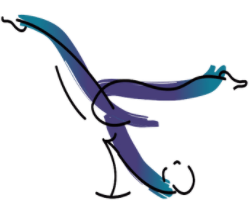Ways Pilates is Getting Incorporated in Physical Therapy
Physical Therapy, Pilates / By Allison / August 16, 2020
Pilates and Physical Therapy go hand in hand. In fact, founder Joseph Pilates created this practice in order to rehabilitate people with chronic physical pain. For decades, Pilates has been used by physical therapists as an effective form of rehabilitation. Experts know that Pilates offers many benefits to practitioners— improved posture, balance, and increased strength, just to name a few.
In recent years, Pilates has evolved into a popular workout that people practice to reach their fitness goals. There are plenty of available advanced-level workouts that people use to break a sweat. However, the restorative nature of this exercise hasn’t gone away. Around the world, Pilates still serves millions of people every day who are in need of a low-impact exercise that can help them rehabilitate from their injuries and chronic physical issues.
Originating in Physical Therapy
German physical trainer Joseph Pilates was introduced to bodybuilding, gymnastics, and martial arts at a young age by his father. A long-time sufferer of asthma and stricken with rickets and rheumatic fever, Joseph used these practices to improve his physical strength and his overall health. These exercises worked, and Pilates came to believe that the key to improving one’s physical health is rooted in improved breathing and posture.
With gymnastics, bodybuilding, and martial movements in mind, he created a series of training techniques and built his own equipment, which practitioners still use today. By the 1920s, the Pilates exercise method was born. The first people Joseph treated were veterans of WWI. Later, In New York, Joseph was commissioned to rehabilitate injured professional ballet dancers.
His exercises were geared toward helping these clients heal from their damages and even to prevent further injury. As many still are today, most of the exercises were done while laying down on a reformer, which provides people with a safer way to build muscle and restore mobility. Eventually, these clients spread the word of Joseph’s revolutionary exercise and others followed.
Pilates in Physical Therapy Today
Many rehabilitation centers and physiotherapy practices house licensed physical therapists who are certified Pilates trainers. Based on an assessment of your current physical needs, a therapist might use Pilates-based methods to help correct your posture, strengthen your core and back, and gain back your mobility. Typically, therapists who use Pilates tend to blend the practice with other modern or traditional forms of physiotherapy. Rehabilitation clients do not need to have any prior Pilates experience to benefit from Pilates-based rehabilitation.
At a physical therapist’s office, you might find typical Pilates equipment items like Pilates Cadillacs, reformers, barrels, spine correctors, and Wunda chairs. This equipment is used often during appointments to provide clients a guided way to perform their exercises. Pilates-oriented physical therapists may also give you mat exercises as variations that you can perform on a Pilates mat at home.
Post-Rehabilitation
Some physical therapy clients experience Pilates for the first time during their treatment. After being discharged, most physical therapists are willing to help their clients transition to a more exercise-based Pilates program that they can perform at home or at a local studio. Those with the following ailments can find significant benefit in Pilates-based rehabilitation and continued practice:
Lower back pain/sciatica
Scoliosis, kyphosis, or other posture impairments
Chronic neck pain
Osteoarthritis
Old injuries (hip, knee, shoulder, ankle, etc.)
Looking for a better way to manage your pain? Pilates might just be the answer you’ve been looking for. Ask your local physical therapist if they incorporate Pilates in their practice.
Are you interested in adding Pilates to your physical therapy practice? Pilates Direct has everything you need to get started. Visit their website pilatesreformersdirect.com to see the extensive collection of Pilates reformers, Cadillacs, and other Pilates equipment.


